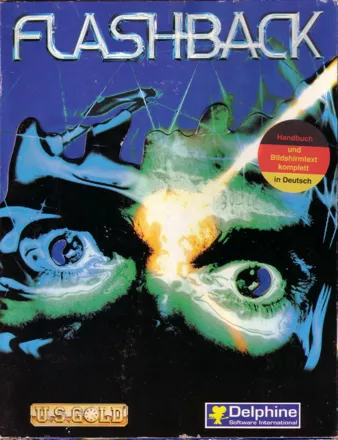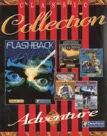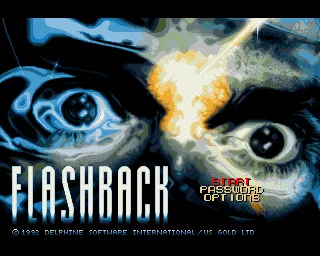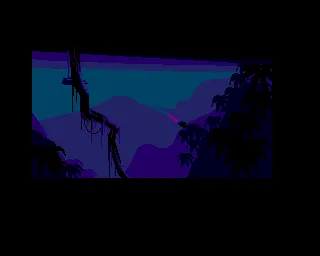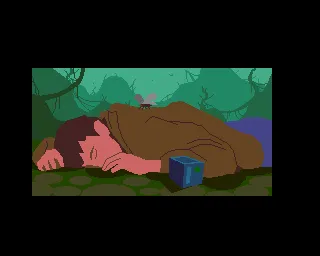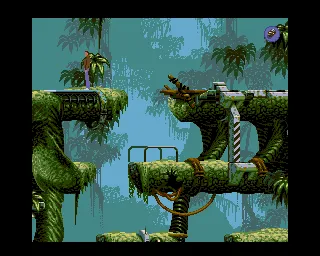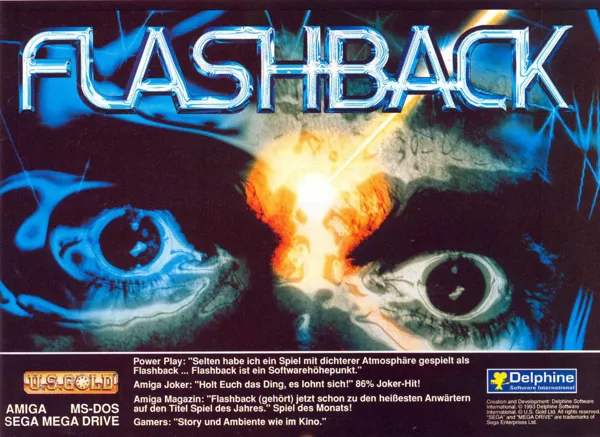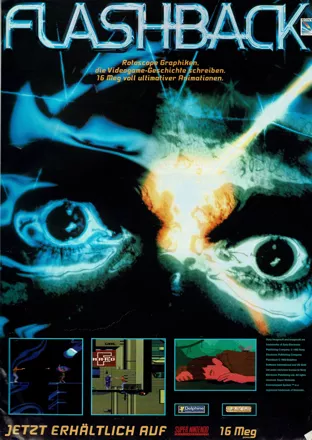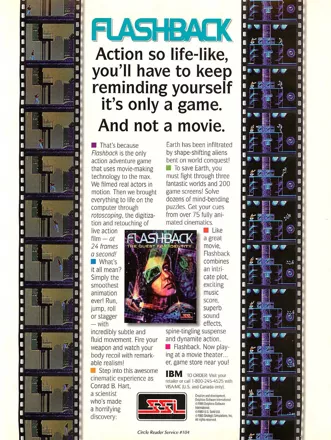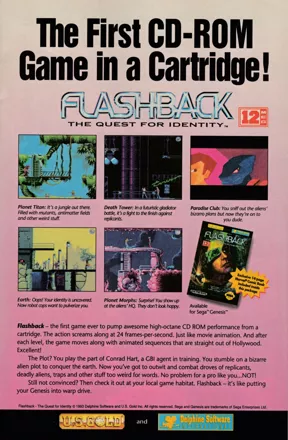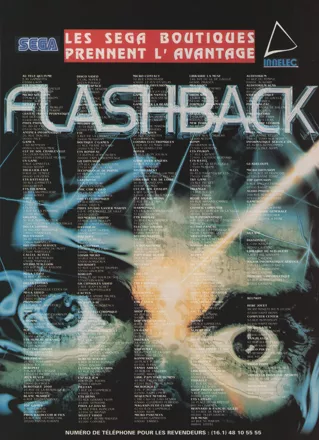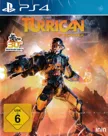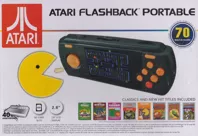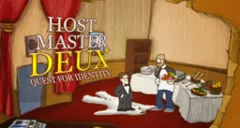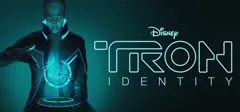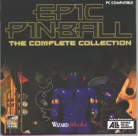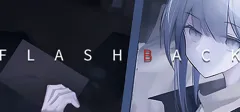Flashback: The Quest for Identity
Description official descriptions
The year is 2142. The player takes control of Conrad B. Hart, a man who has lost his memory. After barely escaping from hostile aliens, Conrad's bike crashes on an unknown planet. Conrad finds himself in the jungle, and from that moment on his quest for survival and his lost identity begins.
Flashback: The Quest for Identity incorporates elements of platforming, shooting, and problem-solving. The game can be described as a "cinematic platformer" (commonly referred to as Prince of Persia style), following a design philosophy that was also manifested in Delphine Software's previous work, Another World. Compared to that game, Flashback focuses more on platforming and exploration of large levels.
While a large bulk of the gameplay is dedicated to running, jumping, and shooting enemies, there is also a considerable exploration element in the game, as well as some puzzle-solving. The player navigates Conrad through platform structures, performing various moves. It is possible to simply jump or do a longer run-and-jump, run, climb, hang off ledges, and pick up objects lying on the ground.
To defend himself, Conrad can shoot enemies with his gun and also use various objects (such as stones) to harm or distract them. Crouching and rolling are possible (and often essential) moves that can be executed during combat. The gun has unlimited ammunition; however, shields that Conrad uses to protect himself from attacks are depleted when he is hit and can be recharged at special stations. Though most environments in the game are hostile, there are a few locations that are devoid of enemies. The player is usually required to talk to characters, gather information, and complete tasks in an adventure-like fashion in these areas.
Most of the versions utilize cutscenes with polygonal vector graphics. The CD versions replace those with pre-rendered 3D animations. The Sega CD version also features voice-overs.
Spellings
- פלאשבק: זיכרון גורלי - Hebrew spelling
- フラッシュバック - Japanese spelling
Groups +
Screenshots
Promos
Credits (Amiga version)
25 People (20 developers, 5 thanks) · View all
| Amiga Version | |
| Programmers | |
| Graphic Artists | |
| Hardware Engineer | |
| Story | |
| Level Design | |
| Music | |
| Sound fx | |
| [ full credits ] | |
Reviews
Critics
Average score: 86% (based on 60 ratings)
Players
Average score: 4.0 out of 5 (based on 311 ratings with 12 reviews)
Classic game with awesome graphics for its time!
The Good
Well for starters I thought the storyline was great, I mean it doesn't come up in many games where you have to try and get your memory back so I thought it was unique in that way. The graphics were awesome, so smooth and well rendered it must been really impressive when first released.
The controls for the game were complicated at first by after about 5 minutes it's like riding a bike.
Music is another matter it wasn't really that good but some of the ambience effects were pretty cool and the cinematic to go with really went well together.
The Levels were well set out plus where they placed the enemies was clever, also the puzzles were great and weren't too easy it took me a while to figure them out but I got a very satisfactory feeling for finishing one.
The Bad
There was nothing really bad about this game, and I'm not going to compare it too "Another World" as it ISN'T a sequel to it and it is in no comparison. .
The Bottom Line
They don't make em like this anymore. Classic gaming at its best.
DOS · by Andrew Dunn (8) · 2001
Maybe best platformer ever, in my book
The Good
I think the problem solving based gameplay is great. Obviously this game is like Prince of Persia and Another World (previous Delphine Game), but I think Flashback outdoes them. Another World had a great story, told through cut scenes, but the platforming and problem solving wasn't so great. I think in Flashback you get the sense that the game makers want to challenge you, but they also want you to succeed and beat the game. The game's cut-scenes are good and unlike Another World, there is also text to explain the story. Very good music too, co-composed by French pop composer Jean Baudlot.
The Bad
The combat in the last stage of the game could have been thought through better and improved. Dodging the blue aliens is a fun challenge, but there are tight spots where it's so hard to dodge and have proper battles. Also I think Conrad is a bit slow at drawing and pointing his gun.
The Bottom Line
Based on what I've played, I could probably call this the best platformer ever. Intelligent combat and problem solving and good cut-scenes and music.
Genesis · by Andrew Fisher (697) · 2018
The Good
Supposing you could just ignore the perfect graphics(out of this world was 16 color /vectorized) and ignore the perfect animation and most fluid controls,you are still left with a piece of art,nevertheless.The story is far more than interesting,its evolving,you start off by knowing so little and by the end its a full blown alien invasion you have to deal with.Ignoring the heritage this game had to live up with,this game should be considered the monkey island of platformers.
The Bad
Okay,i suppose the story dragged a bit towards the end,and the music is sparse due to the limitations of the game size,but even with the music off and your skipping the cut-scenes you are still left with a work of art.
The Bottom Line
This game would be best described as perhaps the most probable game to attract people towards games and computers in general,it even got me in the scene all because of its wonderful graphics and responsive controls,it layed the soil for such marvels as Oddworld and Heart of darkness to appear,and most importantly introduces the kind of "heady" platform games to a most wide audience
if you dont want to by it,at least get it at an abandonware site,you wont be dissapointed.
DOS · by helm lehm (13) · 2000
Discussion
| Subject | By | Date |
|---|---|---|
| HELP!!_Flashback:Can't do fourth mission | Stephen Labuschagne | Aug 25, 2009 |
Trivia
1001 Video Games
Flashback appears in the book 1001 Video Games You Must Play Before You Die by General Editor Tony Mott.
Release variations
A bargain bin CD-ROM version of the game for Sega CD (which was later adapted to the PC CD-ROM, 3DO and CD-i) contained new cinematic sequences with voice acting and sound effects. This version of the game came only in a jewel case (no box).
Ports and conversions
- Although Amiga version of the game was released as the first one in December 1992, it was in fact a port from the original platform which was Sega Mega Drive. However SMD version was released later in spring of 1993.
- SNES port was slightly censored. Death Tower was renamed to Cyber Tower, New Washington's bar became a cafe and all the enemy mutants were recolored green.
- Amiga version has cut-down introductory sequence and some cut scenes during the gameplay does not exist until the player enables them manually by pressing CTRL+C. The Amiga and DOS versions also had an option to zoom in on the action whenever Conrad opens fire. It was removed from all other versions. Zoomed in option in DOS version can be enabled in the game options screen while in the Amiga version by pressing F9 during the game.
- DOS version contains changed message that Conrad writes in the ending.
Soundtrack
A two-track CD soundtrack was released featuring music inspired by the game, but not directly from it.
Technology
One of the materials in the box of Flashback is a coupon for a rebate on a Gravis Gamepad and a note to "try Gravis' Ultrasound 16-bit sound card." This is ironic because, amongst Gravis Ultrasound enthusiasts, Flashback is notorious for being incompatible with the GUS.
Programmers might be interested in the fact that Flashback is one of very few games that used a screen mode with a width of 256 pixels. This implies that the address of a pixel on the screen could be comfortably stored in a 16-bit register, say AX. The X-coordinate could then be manipulated through AL, and the Y-coordinate through AH. This might have contributed somewhat to Flashback's impressively fluent animations.
Awards
- Amiga Joker
- Issue 02/1994 – Best Genre Mix in 1993 (Readers' Vote)
- Electronic Gaming Monthly
- May 1993 (Issue 46) - Game of the Month (Genesis version)
- November 1997 (Issue 100) - ranked #92 (Best 100 Games of All Time) (Genesis version)
- FLUX
- Issue #4 - #10 in the "Top 100 Video Games of All-Time" list
- GamePro
- 1993 (Vol. 6, Issue 2) - Action/Adventure Game of the Year (Genesis version)
- Retro Gamer
- September 2004 (Issue #8) – #65 Best Game Of All Time (Readers' Vote)
- Issue #37 - #15 in the "Top 25 Platformers of All Time" poll
Information also contributed by Brian Hirt, Robert Schmidt, Apogee IV, PCGamer77, and Big John WV
Analytics
Upgrade to MobyPro to view research rankings!
Related Sites +
-
Manomio: Flackback
official game website for the iPhone version
Identifiers +
Contribute
Are you familiar with this game? Help document and preserve this entry in video game history! If your contribution is approved, you will earn points and be credited as a contributor.
Contributors to this Entry
Game added by faceless.
Amiga added by POMAH. CD-i added by Corn Popper. PC-98 added by Infernos. iPhone added by Sciere. SNES, Jaguar, Genesis added by Rogee. Acorn 32-bit added by Kabushi. Dreamcast added by Iggi. FM Towns added by Terok Nor. SEGA CD added by Unicorn Lynx. 3DO added by Indra was here. Macintosh added by MAT.
Additional contributors: Trixter, MAT, Unicorn Lynx, Sciere, Alaka, formercontrib, Crawly, j.raido 【雷堂嬢太朗】, Zeppin, Patrick Bregger, mailmanppa, FatherJack.
Game added December 9, 1999. Last modified July 25, 2024.
